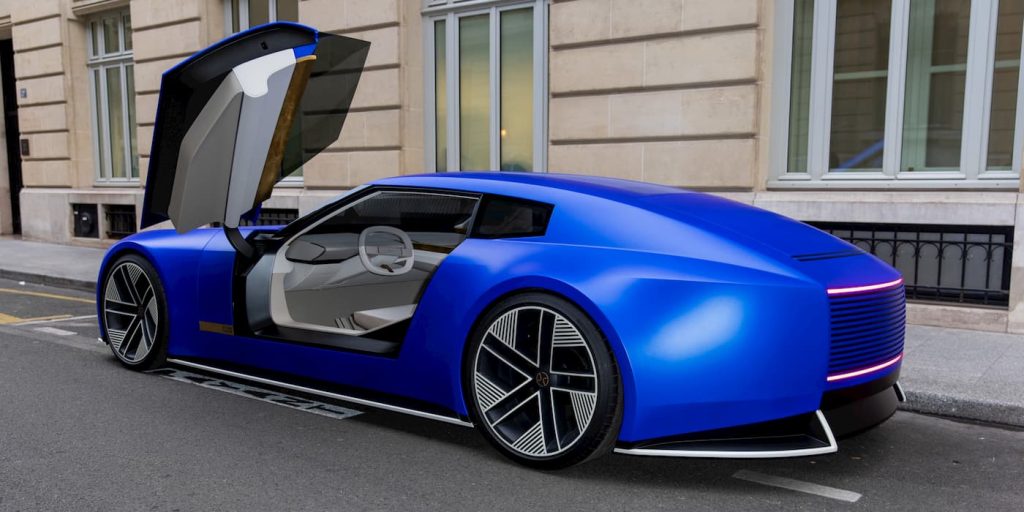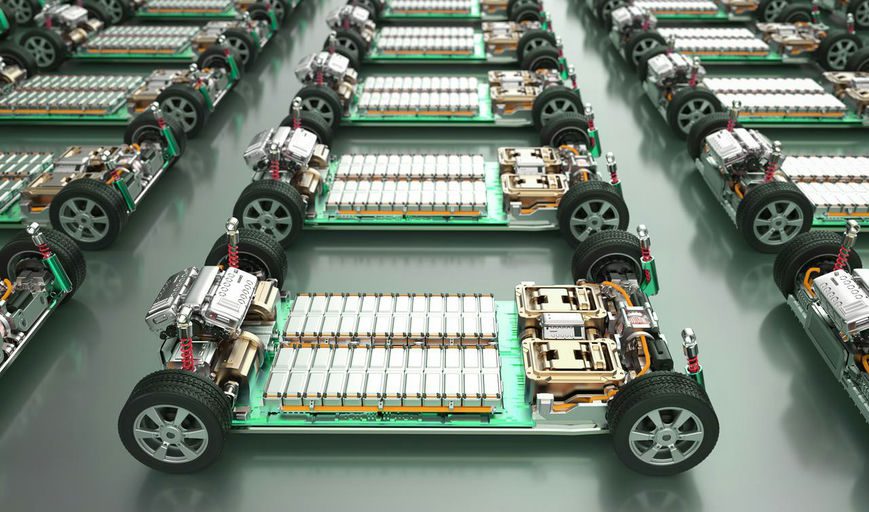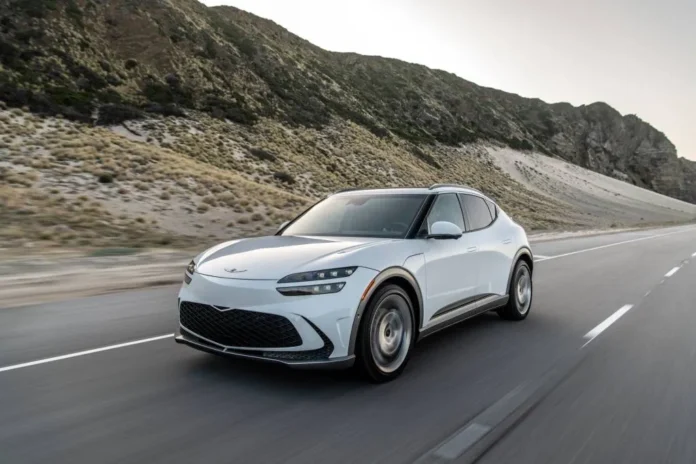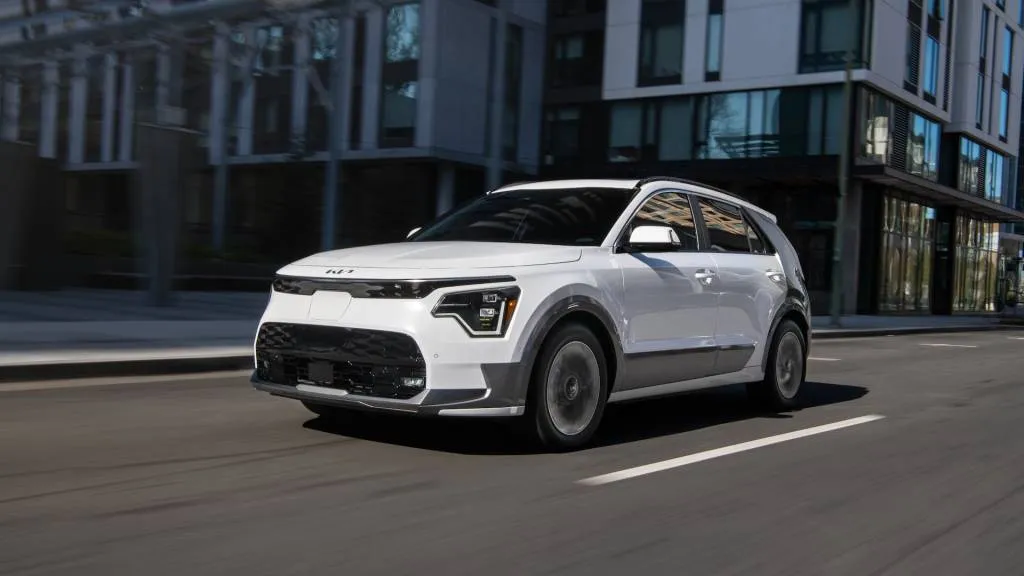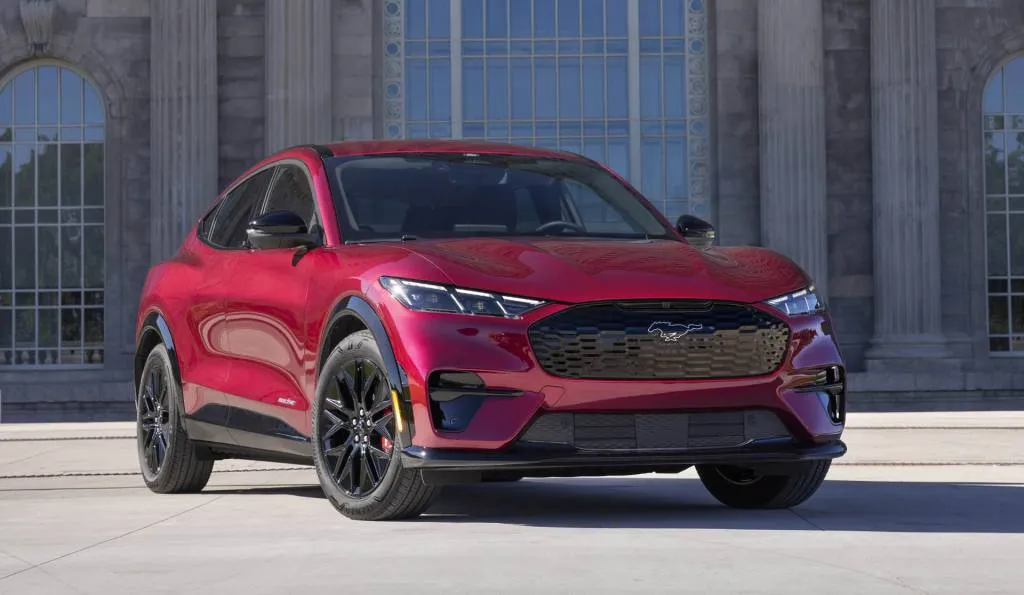While Toyota says it’s committed to a future with many different efficient powertrains, the world’s largest automaker has long been accused of not taking the electric vehicle revolution seriously. The ultimate proof may be the Toyota bZ4X. While others are racing ahead with more range, better tech, EV-specific software and faster charging times, Toyota’s original modern EV offering has felt less and less competitive with each passing year.
But something unexpected has happened in recent years: The bZ4X has been a hit, perhaps in spite of itself. Sales shot up in the U.S. in 2024 amid aggressive incentive programs, and it’s picking up steam in Europe too. In mostly-electric Norway, for example, it’s now the top-selling model in the country. Evidently, people want good all-electric options from the company that pioneered electrified cars.
Photo by: Patrick George
2026 Toyota bZ4X Live Photos
So with a raft of updates to the bZ4X this year that include more range, quicker charging, more power and improved route planning, Toyota has a message to those people: We hear you loud and clear.
“We listened to our customers, our retailers and the journalists who were testing our products,” Toyota Operating Officer and Chief Branding Officer Simon Humphries said at the automaker’s Kenshiki Forum in Brussels last week. “It’s got up to 50% more power, charging times up to twice as fast, and double the towing capacity.”
The bZ4X’s chief engineer, Masaya Uchiyama, told InsideEVs that the new car was benchmarked against the Tesla Model Y, the Hyundai Ioniq 5, Ford Mustang Mach-E and the Cadillac Lyriq. That’s strong company to be in, EV-wise, and all are competitors that have previously been ahead of Toyota’s offering in most areas.
With these enhancements—which are expected to translate to the U.S. market car soon enough—is the bZ4X about to become the EV it was always meant to be?

Photo by: Patrick George
2026 Toyota bZ4X Live Photos
Leveling Up With More Range, More Horsepower
Let’s start with the important stuff. The bZ4X now comes with two wholly new battery options. In the past, the bZ4X has offered a 71.4 kWh battery for its front-wheel-drive models and a 72.8 kWh one for its all-wheel-drive variants.
| 2024 bZ4X | New bZ4X | |
| Battery Size | 71.4 kWh; 72.8 kWh | 57.7 kWh; 73.1 kWh |
| Range | Up to 516 km EU-spec; 252 miles U.S. | Up to 573 km EU-spec; U.S. spec TBA (~280 miles InsideEVs estimated) |
| Output | Up to 214 hp | Up to 343 hp |
| Max DC Charging Speed | 150 kW | 150 kW |
Now, it follows more of the “big and small” strategy we see with EVs from Hyundai and others: the entry-level bZ4X battery is a 57.7kWh unit, while the larger one is a 73.1kWh unit. (All ratings are for gross capacity.)
Toyota says this was done so that “customers can select a version that best suits their driving requirements and their budget.” The smaller battery will be exclusive to the FWD model, while the larger one with be available with both FWD and AWD.

Photo by: Patrick George
2026 Toyota bZ4X Live Photos
The exact ranges on those models haven’t been disclosed yet, but Toyota is already saying the bZ4X will offer up to 356 miles (573 km) of range on the European WLTP cycle. Previously, the most the bZ4X could offer was 320 miles (516 km) in Europe, so this is a substantial upgrade.
U.S. range figures haven’t been disclosed yet. Stateside, the highest-range bZ4X—the XLE FWD model—offers a maximum of 252 miles of range. Some quick back-of-napkin math shows the bZ4X could now be a 280-mile car in U.S. specs, but we’ll have to see what its official rating is. We also don’t know for sure whether the small-battery version will make it to the U.S., as consumers here seem to be more range-focused.

Photo by: Toyota
2025 Toyota bZ4X Interior
Uchiyama added that it’s not just the battery sizes that are different, either. “We improved the energy density and increased the amount of cells in each,” he said. “Before on the bZ4X, one battery had 96 cells. The new generation has 104.”

Photo by: Toyota
The bZ4X’s “eAxles,” Toyota’s name for its electric motors, have also been improved and now include silicon carbide semiconductors for more power output. That’s the same tech that made the Lexus RZ300e the most efficient electric SUV on the U.S. market. The bZ4X now starts at 165 hp for the base FWD version but goes all the way up to 343 hp for dual-motor AWD, making it “one of the most powerful Toyota models available in Europe outside the GR performance car range,” the company says.
Considering the last bZ4X I drove had 214 hp and 248 lb-ft of torque, the new one should have a hell of a lot more grunt.
The AWD version’s towing capacity has been doubled to 3,306 lbs (1,500kg) which is especially aimed at allowing better caravan-hauling options for European buyers.
Improved Charging, Preconditioning, Navigation
But range isn’t the biggest issue for the bZ4X. Charging is. With any luck, that could soon be a thing of the past. Toyota has doubled the power of the onboard AC charger on the higher models from 11 kW to 22 kW, exceeding even the Ioniq 5 and its brethren. Provided a driver can find an extremely powerful Level 2 charger, that should cut its charging time in half; the bZ4X used to take almost 10 hours from its “low light warning” to 100%.
DC fast charging, however, remains unchanged at max speeds of 150 kW. That may disappoint at a time when more and more EV options are rated to take 200 kW or higher. But Uchiyama said that the bZ4X’s charging curve—its ability to sustain a high level of power for a long time, essentially—has been improved as well, and that should yield a better experience overall.

Photo by: Toyota
“We had a very peaky charging curve before,” Uchiyama admitted, meaning the bZ4X would hit its maximum charging speed early on and then taper off quickly, leaving drivers to wait a while to juice up. “We flattened that curve now. We can now stay at the higher voltage.”
Uchiyama said Toyota aims for the bZ4X to go from 10% to 80% in 30 minutes. While not as lightning-fast as the Ioniq 5 it’s targeting, that could be a significant improvement from before, when some bZ4X models took nearly an hour to pull that off. It also puts the Toyota in the same charging-time ballpark as competitors like the Tesla Model Y and Ford Mustang Mach-E.

Photo by: Toyota
2025 Toyota bZ4X Interior
More importantly, the bZ4X now comes with battery preconditioning as a standard feature, and it’s activated both manually and automatically when a charging station is set in the navigation system. By warming the battery before charging, Uchiyama said, this should enable much quicker charging overall. This was added especially for those bZ4X drivers in places like Norway or Canada, he said, who struggled with charging in very cold weather.

Photo by: Toyota
2025 Toyota bZ4X Interior
Toyota also finally—finally—implemented a proper EV routing function into the navigation system. That was one of my biggest gripes with the previous bZ4X: if you wanted to, say, drive from New York to Boston, you had to use Toyota’s mobile app to plan a route or find chargers nearby. The car’s software didn’t do that natively. Now, however, it does. “This will automatically select a route with recommended, convenient charging stations, based on the car’s battery state of charge and remaining driving range,” the automaker said. This function should also be coming to existing cars via an over-the-air software update too.
Updates Inside And Out
You’d have to have pretty impressive eyesight to immediately spot the visual differences between the updated bZ4X and the old one, but they do exist. The front end is slightly revised for what Toyota claims will be better aerodynamics for more range, but otherwise, expect no major changes.


The inside is a different story. The entire dashboard has been revised to move away from the “cockpit” feel of the old bZ4X, including the relocation of the driver-facing display screen. The gear selector knob has been moved down below dual wireless smartphone chargers, the air vents are shaped differently and a 14-inch multimedia screen is fitted as standard.
“People wanted to have more room and space inside, especially as a BEV,” Uchiyama said.

Photo by: Patrick George
2026 Toyota bZ4X Live Photos
Toyota officials also added that the new bZ4X is quieter inside and features improvements to its noise, vibration and harshness insulation systems. Overall, it should be a more comfortable car to spend time in, Uchiyama said.
Price And Release Date

Photo by: Patrick George
Pricing for the updated bZ4X has not been announced yet, though now that it has a smaller battery option, it could start at a more affordable point than the outgoing car. It’s expected to go on sale in European markets later this year, after summer.
Toyota officials emphasized that all of these updates are for the European-spec model. However, it’s highly likely we’ll see them trickle down to the U.S.-market version in the coming months or even weeks. When the bZ4X does arrive stateside, given Toyota’s past claims, it’s likely to have a Tesla-style North American Charging Standard (NACS) plug from the factory.
That would make the bZ4X a faster, more powerful, longer-driving EV with better route planning and quicker charging, plus native access to the Tesla Supercharger network. If Toyota can really deliver, then the bZ4X may not be dismissed as some afterthought anymore.
At this event, Toyota reaffirmed that three more new all-electric models would be introduced by 2026 to join the updated bZ4X, the new C-HR+ and the Urban Cruiser. Three more are coming, and they seem to be a pickup truck and at least one SUV, possibly based on the Land Cruiser Se concept.
Is Toyota finally getting serious about EVs? It certainly seems that way, and that should be great news for any fans who have been waiting for this to happen.

24
Patrick George
Contact the author: patrick.george@insideevs.com

Source link by Battery Tech – News and Trends | InsideEVs
Author
#Toyota #bZ4X #Here039s #What039s


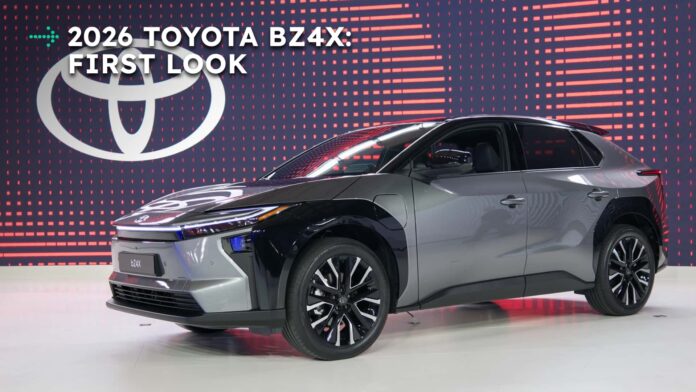

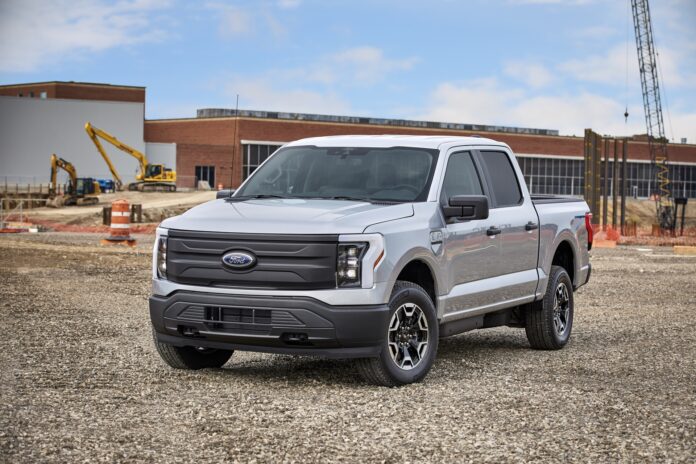



![Jaguar’s controversial ultra-luxury EV looks fake in its first public Jaguar’s controversial ultra-luxury EV looks fake in its first public appearance [Video]](https://ev-magazine.com/media/2025/03/1741719427_Jaguars-controversial-ultra-luxury-EV-looks-fake-in-its-first-public-696x364.jpeg)
